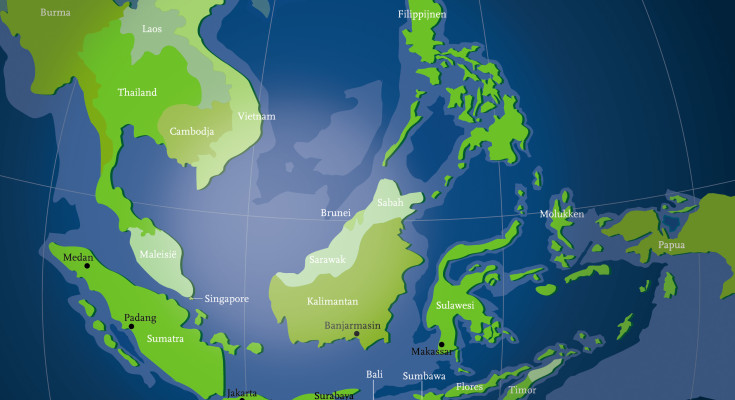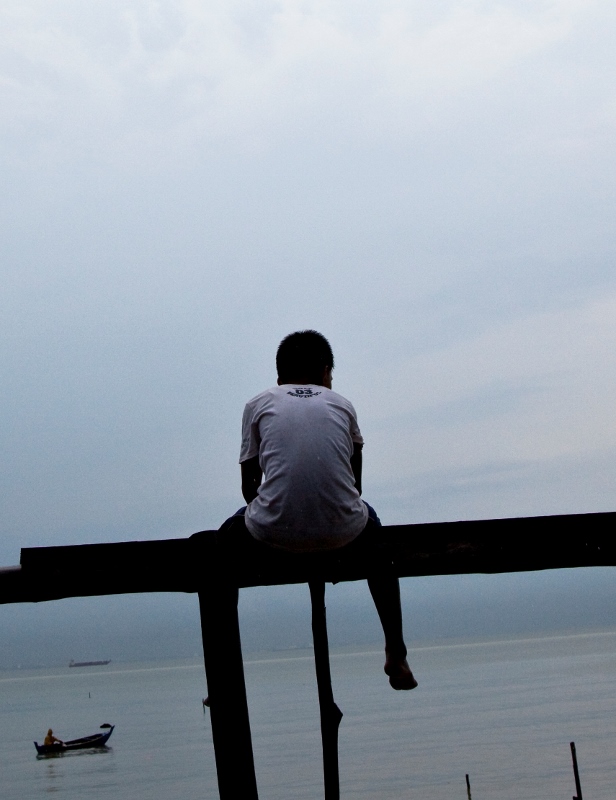By: Michele Ford and Lenore Lyons
Riau Islanders are outward looking – Henri Ismail
When people think of cosmopolitans, they think of jet-setting elites or the chattering classes, flitting between countries and consuming the ‘global’ through food, film and other aspects of their privileged lives. But not all cosmopolitans are rich or educated. In fact, some of them don’t ever leave home.
Riau Islanders living in Tanjung Pinang, Tanjung Balai Karimun or anywhere on Batam Island do not need to cross an international border to connect with Malaysia and Singapore. Whether or not they choose or can afford to travel there, the visibility of Singaporeans and Malaysians in their towns, in their newspapers, and on television – plus the very proximity of Singapore and Malaysia – make those places seem easy to know. Some Riau Islanders even set their clocks on Singapore time.
Everywhere in Indonesia people are now far more exposed to ‘the world’ than they have ever been. Mobile phones, the internet and cable TV may not have touched all Indonesians directly, but their influence has spread to all but the most isolated parts of the archipelago. But exposure is different from mind-set. Riau Islanders are set apart from other working and lower-middle class Indonesians by their deep familiarity with life outside Indonesia, and what this familiarity brings.
Living on the edge
The special character of islander life emerged in a context where travel to other parts of Indonesia was for many decades relatively rare. The tyranny of distance has lessened with the advent of cheaper airfares, but many still rely on boats for travel in the islands.
The sea journey to other parts of Indonesia is time-consuming and arduous. The trip from Tanjung Pinang to Pekanbaru in mainland Sumatra takes three days and two nights, or several hours by boat to the mainland port of Dumai followed by several more overland. It is much easier to get to Singapore or Malaysia. The journey from Batam or the northern ports of Bintan to Singapore by ferry is less than an hour. It’s just as fast for people living in Tanjung Balai Karimun to get to Malaysia.
Ferries from Karimun to Singapore and Malaysia are cheaper and faster than the inter-island ferry to Tanjung Pinang. As long as travellers make a day trip or can stay with friends or relatives, these countries are more accessible physically – and even financially – than a trip to the provincial capital of the islands.
What’s more, it’s been this way for a long time. Until relatively recently, Riau Islanders travelling to Singapore or Malaysia didn’t even need a passport. Before that, they could move back and forth across the straits as easily as to any nearby Indonesian island.
Experiencing the other
The cross-straits connections that Riau Islanders have forged and the constant flows of peoples and goods across the border have created a way of life that is different to that which Riau Islanders imagine other Indonesians experience. There is good reason for this belief. At a time when mainland Sumatra didn’t even have electricity, people in Tanjung Pinang were watching Singaporean TV. The difference in lifestyles was so marked that when one man we know moved from Tanjung Pinang to Pekanbaru as a child in the mid-1970s he thought he was moving overseas.
People do, of course, experience Singapore and Malaysia in different ways. The wealthy businessman who takes his family for regular holidays in Malaysia has a different kind of connection from the Chinese market stall owner who saves every cent to educate her children in Singapore. She, in turn, has a different experience from the second-hand goods trader who crosses the border each month to buy stock. And the sex worker employed in the busy port town brothel, the motor cycle taxi-driver who hustles tourists on the dock, and the immigration official who stamps passports in the arrival hall all have a more intense transnational experience than the primary school teacher, who has relatively little contact with foreigners.
Ultimately, however, it is impossible to live in any but the most isolated communities on the islands of Batam, Bintan and Karimun, without developing an awareness of what it is like to live across the straits.
Knowing, not loving
There’s a saying in Indonesian: the heart can’t love what it doesn’t know. But in fact knowing doesn’t always lead to love. While many Indonesians have a deep-seated aversion to Malaysia, most see Singapore as some kind of paradise, awash with fancy shopping centres and the other trappings of modernity. But long-term residents in the Riau Islands know better. Their deeper understanding of life in Singapore precludes blind admiration. Contact with tourists from those countries, and visits to (or from) relatives or friends living there, has bred something more like pity for Singaporeans who live in ‘bird cages’ and have little time to enjoy life or to socialise.
It is this knowing that sets Riau Islanders apart from most other working and lower middle-class Indonesians. Living on the edge of a very large nation-state and on the doorstep of a global city, their daily lives are infused with ‘the global’. Their consumption habits and interactions with foreigners produce a worldview that tends to be outward-looking and open. At the same time they are grounded enough to be aware of the realities – and advantages – of ‘the local’. Riau Islanders don’t have to travel the world to be cosmopolitan.
Michele Ford (michele.ford@sydney.edu.au) is an ARC Future Fellow in the department of Indonesian Studies at the University of Sydney. Lenore Lyons (lenore.lyons@sydney.edu.au) is an Honorary Professor in the same department. Michele and Lenore have been working for several years on a research project on cross-border interactions between the Riau Islands and Singapore initially funded by the Australian Research Council (DP0557368).













